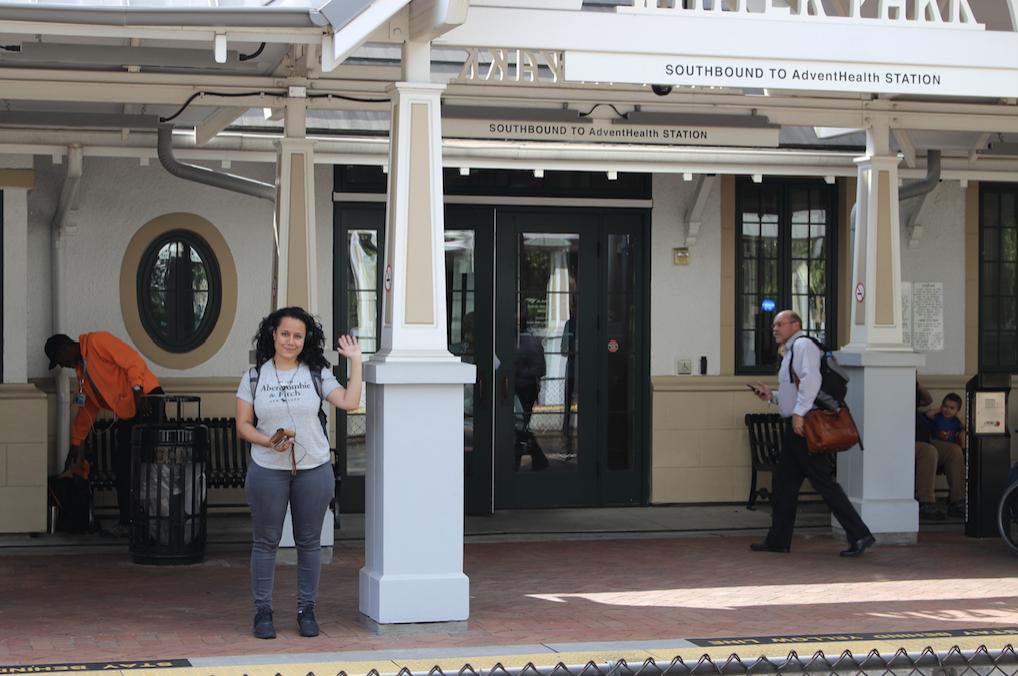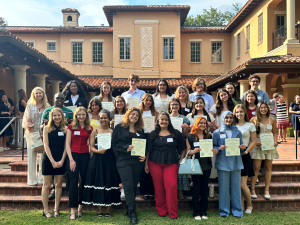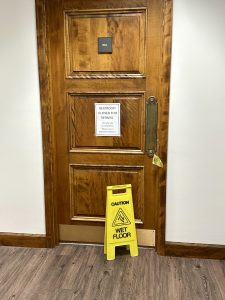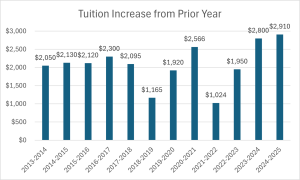
In urban planning circles, Donald Shoup’s “The High Cost of Free Parking” is required reading. Shoup contends parking is an equity issue, given that employers offer parking to drivers but little to everyone else. One-third of Americans do not drive, and a disproportionately high number of these people are low-income and/or persons of color.
Rollins College regularly makes equity adjustments to faculty salaries, but expending $11 million for a parking garage with 750 spaces ($14,000 per parking spot is the industry standard with minimal aesthetics) is the mark of a privileged institution. Subsidizing the automobile also adds to traffic congestion, air pollution, and an asphalt blight that’s specter is Ultimate I-4. In the United States, the ruinous overabundance of parking—two billion spots for a scant 200 million cars—has profound economic, geographic, and environmental consequences, which Shoup has documented.
What could the college do different? It could follow Shoup’s advice. A UCLA professor, he convinced university administrators to pay employees $5,000 to relinquish their parking privilege. In return, employees drove 20 percent less and CO2 emissions from commuting fell by 807 pounds per employee per year.
In 2014, a parking cash-out proposal was presented to the Rollins Provost (no reply yet). It was part of a report, “Sustainable Enterprise: Activating SunRail in Winter Park Florida,” funded by a $25,000 EPA Sustainability Grant and prepared by Rollins students: Parking cash-outs promote walking and biking, and reduce the need for parking spaces. Employees can earn a tax savings through Commuter Tax Benefits. The college should also subsidize employees’ commute modes by creating incentives for carpool, transit, bike, or walk with money foregone from parking construction and maintenance.
Employees that commute via “active transportation,” bicycling, walking, and transit (which begins and ends with a walk), also step into good health. In our automobile-centered society, 30 percent of Americans are sedentary—walking 1,000 steps a day—and active transportation is the antidote. Walking 10,000 steps a day drops the mortality risk for sedentary people by 46 percent. I do not own a car, and commuting to campus is not only a conduit to good health, it allows me to reap the profits of what Henry David Thoreau called, “pure living.”
Thoreau measured cost as the time taken away from a daily walk devoted to exercising the body and mind. Walking is a worthless time sink when accounting for profit, but it was priceless for Thoreau. Calculating the cost of owning a carriage and a team of horses, he found it was faster and more productive to go by foot. Walking allowed him to free his mind from commercial calculations and idle chatter, and absorb nature’s exhibition. In a society where screen time addiction is a curse, Thoreau’s calculus is invaluable. “Walking magnifies receptiveness,” philosopher Frederic Gros writes, “I’m always receiving pure presence by the ton. All of that most obviously count for something. In the end, walking has been the most beneficial for being less profitable.”
In the future, perhaps this profit motive will inform college investments.
Dr. Bruce Stephenson is a professor of Environmental Studies.



















Be First to Comment